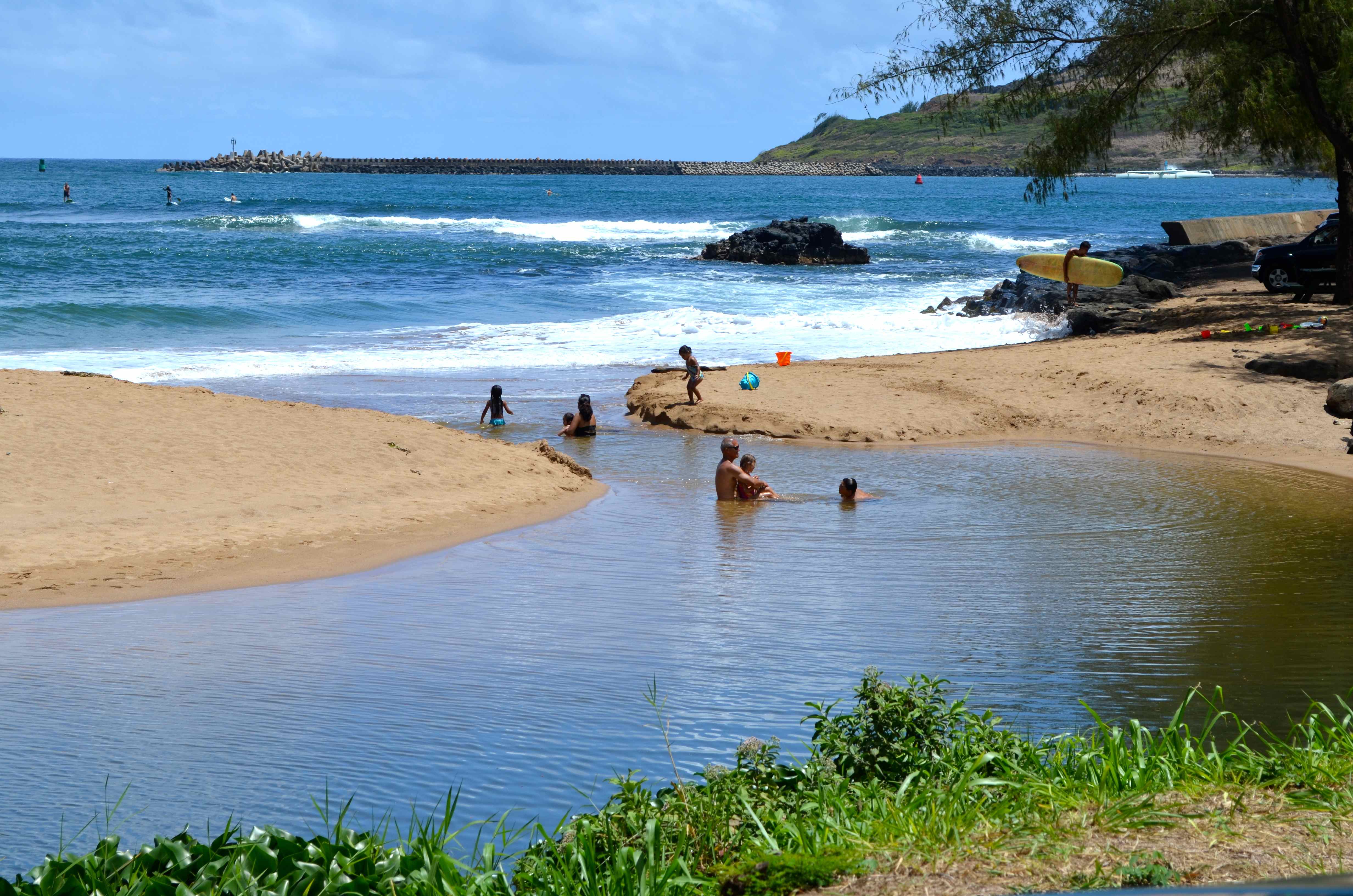
Kauaʻi Annual Water Quality Reports
Since 2011, the Kauaʻi Chapter has tested beaches around the island for the presence of enterococcus, a fecal bacteria that indicates the presence of human or animal waste in the water. Elevated levels of enterococcus increase the likelihood that other pathogens that can make people sick may be present. Water is considered unsafe if levels exceed 130 enterococcus forming units/100mL. Sample collection and pollution level standards set by Hawaiʻi Department of Health (HDOH). The Chapter publishes its data in an annual report. You can also view the 2023 Hawaiʻi Regional Water Quality Report that compares water quality conditions across Kauaʻi, Oʻahu, and Maui.
Of the 18 sites regularly tested in 2024, eight exceeded health standards over 50% of samples.


What did we find?
What Impacts Coastal Pollution?
Across Hawaiʻi, sites located at stream mouths, beaches with freshwater outlets, or in bays without much circulation are typically characterized by higher bacteria levels than at ocean sites with better circulation and more mixing. Streams located at many of the most contaminated sites can carry runoff from cesspools and other pollution sources in the watershed such as animal waste from pets, agriculture, and wildlife.
Hawaiʻiʻs 83,000 cesspools are one of the biggest threats to water quality state wide, discharging 52 million gallons a day of sewage into coastal waters. 14 out of the 15 sites on Kauaʻi and Oʻahu which exceeded recreational health standards over 50% of samples in 2024 are located in Priority 1 and 2 cesspool areas (link to Hawaiʻi Cesspool Prioritization Tool). This designation indicates that the cesspools in these areas pose significant hazard to human health and the environment. The chronic pollution documented at these sites by the BWTF, as well as the findings of the Kauaʻi sucralose stream study, also indicate the potential impact of sewage pollution.

Beach goers at Nāwiliwili Stream.
“Our data indicates that coastal cesspools are likely contributing to high bacteria readings in certain areas of the islands,” said Dr. Dan Amato, Coordinator of the Oʻahu Blue Water Task Force. “In addition, large storms can contribute to elevated bacteria levels in coastal areas as flowing streams wash everything from upstream – pollutants, bacteria, nutrients, pesticides – into the ocean.”

The BWTF sites with chronically high bacteria readings are additionally located at the mouth of streams or rivers. Chronic pollution at these sites may also be attributed to land-based runoff from upland areas that flows into the ocean. Families, ocean users, and the public should be aware of the poor water quality conditions in these freshwater flows and seek to avoid them. The public should be particularly aware after heavy rain events that lead to increased runoff and can prompt Brown Water Advisories. Even if you do not see a public notice posted, avoid brown water until conditions clear.
“We strongly recommend that the public stay out of the water if it is brown. The brown water indicates runoff from upslope areas and we often find elevated bacteria levels,” said Dr. Amato.
BWTF Coordinator Dr. Dan Amato in the field.
Photo Credit: Erik Kabik Photography/ erikkabik.com
Stop Sewage Pollution
Surfrider Foundation encourages homeowners to improve water quality by following these 8 simple steps:
- Convert your cesspool
- Share your knowledge about the impacts of cesspools on water quality
- Inspect and pump your septic tanks and cesspools regularly.
- Don’t use septic additives.
- Only flush the three P’s (pee, poop and toilet paper)
- Don’t pour cooking grease or oils down the drain.
- Conserve water inside your home.
- Soak up the rain and reduce runoff by directing roof downspouts into a rain barrel or vegetated area.
Community members are encouraged to check water quality results posted online before they head to the beach at bwtf.surfrider.org/explore/44. Current and historic data are available.
